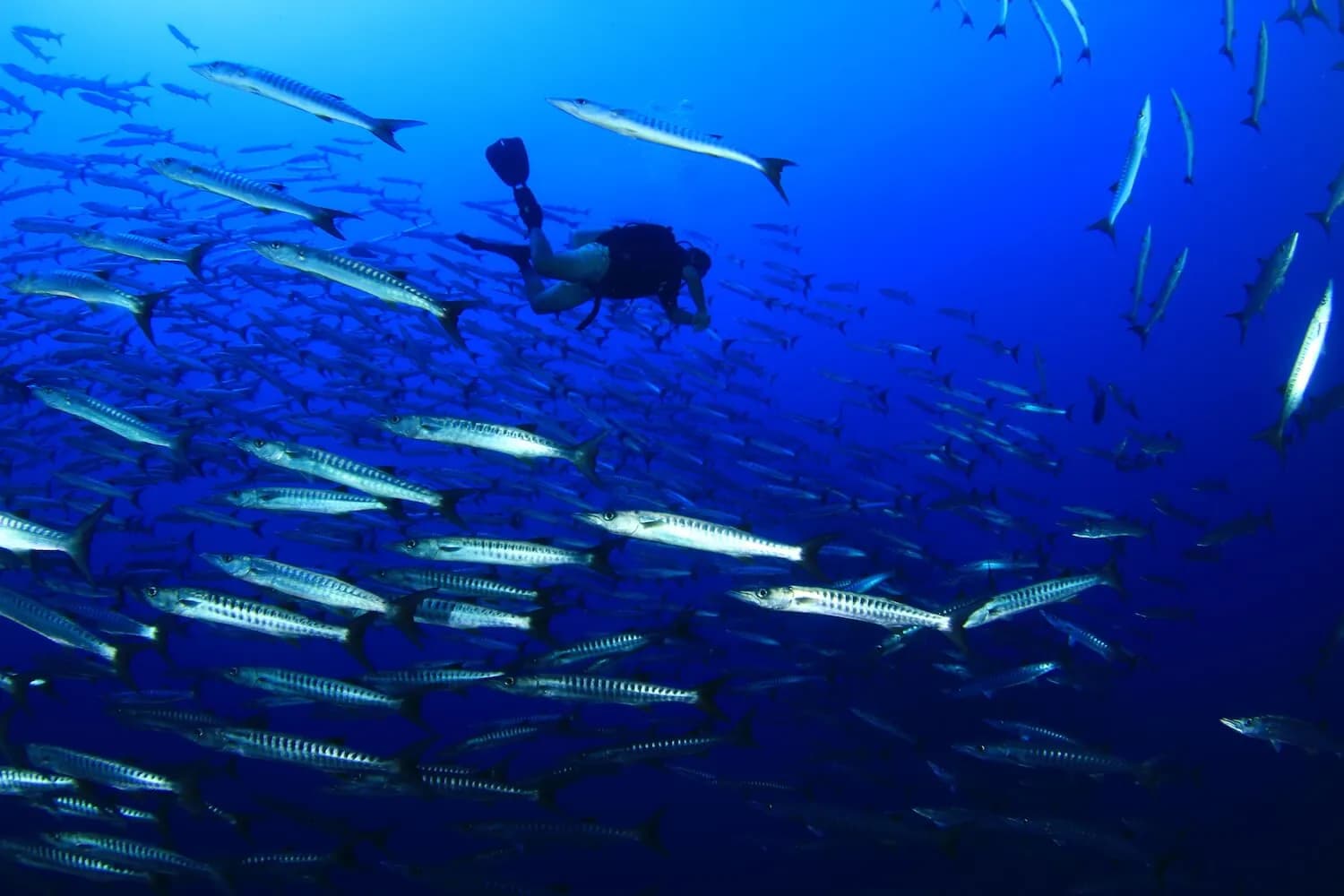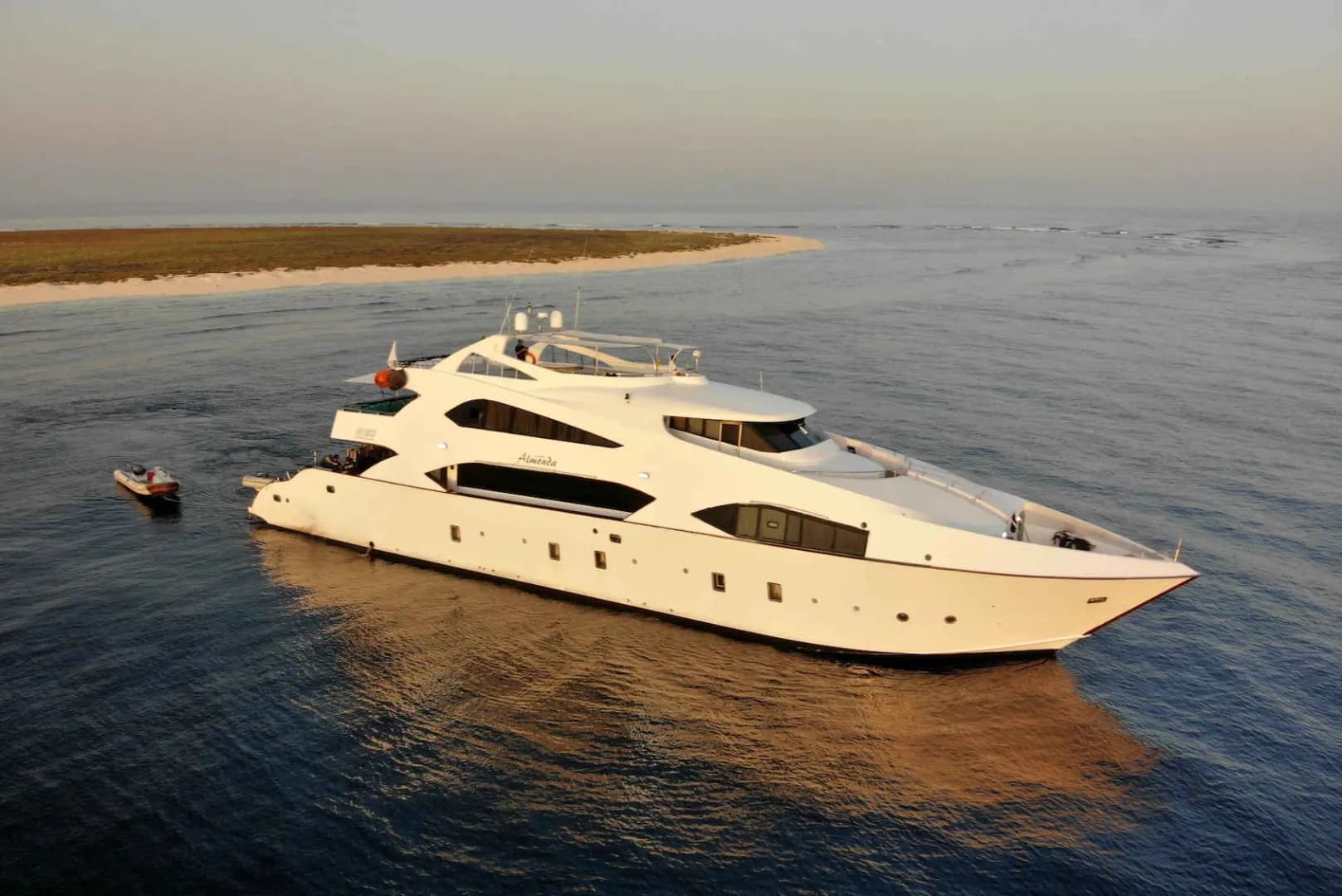
Scuba Dive Level
All Levels
Visibility
50 to 200 feet (15 to 60 meters)
Average Water Temperature
80
Stunning Reefs & Corals
Wreck Diving
Dive Saudi Arabia for exceptional, untouched reefs boasting prolific marine life. Enjoy uncrowded dive sites and some of the best diving the Red Sea has to offer.
For many, Saudi Arabia is not the first destination that springs to mind when considering scuba diving destinations, but perhaps that is why it remains an unspoiled gem waiting to be discovered. Clear waters, excellent visibility, and consistent water temperatures create the perfect conditions to explore this untouched underwater paradise
The Kingdom of Saudi Arabia lies at the furthermost part of southwestern Asia, extending across most of the northern and central Arabian Peninsula. It is nestled between the Arabian Gulf to the east, and the Red Sea to the west. Its western coastline is approximately 1,600km in length, representing 79% of the Arabian Peninsula’s Red Sea shoreline, filled with untouched pristine reefs, most of which remain unexplored.
While Saudi Arabia may be visited less frequently than other popular dive areas around the Red Sea, the marine life is no less impressive. Not only does the area host an abundance of pelagic marine life, including a healthy population of sharks and more than 1,200 species of fish amidst a plethora of healthy corals, but divers can also explore ancient wrecks, walls, caves and more.
Saudi Arabia is a year-round diving destination, thanks to its stunning climate. The southern regions of the Saudi Red Sea are best visited during winter and spring when water temperatures are in the low 80s Fahrenheit and pelagic sightings are more reliable. During the summer months, the water temperature in the south rises towards 90°F, so the diving is better in the north. The high season in the Red Sea is March to May, and the low season is December to February.
Alternatively, you may opt to dive in the Persian Gulf. The water temperatures are similar to that found in the Red Sea, but you'll find the dive sites are considerably less busy.
As a diving destination, Saudi Arabia is relatively undiscovered by tourists, which means its underwater landscape is pristine and untouched. There is almost no development along the Saudi coastline, resulting in reefs unaffected by resort and residential impacts. Not many places in the world boast such well-preserved dive sites home to a wide range of marine life.
When diving in Saudi Arabia, you'll come across things like Red Sea clownfish, tassled scorpionfish, green turtles, dugongs, humphead wrasse, bluespotted ribbontail ray, king mackerel, Ccoral trout, great barracuda, solitary sailfish, whale sharks, nearly 50 species of shark, and much more!
The waters of Saudi Arabia are packed full of life, from small to big!
With a sprawling coastline along both the Red Sea and Persian Gulf, Saudi Arabia enables divers to access an array of dive sites. From the Farasan Island Marine Sanctuary in the southern Red Sea, to wreck diving in Jeddah, to the stunning reefs in Yanbu, you'll be amazed with the rich diving in Saudi Arabia.
A collection of remote reefs and wild islands, the Farasan Banks is one of Saudi's best-kept secrets. This area attracts huge numbers of pelagics in the winter and spring, including schooling hammerheads, barracuda, tuna, and many other species of shark. The reefs are untouched and full of life, with new and exciting dive sites still being discovered.
Jeddah is one of the most popular diving areas in Saudi Arabia. There are a lot of great reefs and wrecks to explore, such as the
You can access all of the wrecks and stunning reefs via boat, and the water temperatures are usually a comfortable 80-86 degrees (27-30 celsius), except November to March when the water starts to cool down and can reach as low as 71 degrees (22 celsius). During these winter months, the wind comes from the south, resulting in big waves and strong currents.
Shore diving in Jeddah is primarily resort-based.
Yanbu is around 350km north of Jeddah and is called the capital of diving. Diving in Yanbu is incredible; the visibility is usually so excellent that it's not uncommon to see the sea bed 60ft below from the boat's deck. Some diving sites in Yanbu include the Iona Wreck (one of the most famous wrecks in Saudi Arabia), Nemo Garden, Seven Sister Reef, Abo Qalawa.
In the south of Saudi Arabia, Al-Lith is where you'll find lots of school fish and pristine reefs. If you intend to visit Al-Lith, you'll need to plan your trip carefully as it's a little more off the beaten path. Contact us for help, our expert dive travel advisors can help you plan the perfect diving trip to Saudi Arabia!
Saudi Arabia is a large country by land mass, so you should decide where you want to dive and build your itinerary from there. With rich cultural history, wonderful food, and amazing natural landscapes, you'll find plenty to see and do topside.
Getting to Saudi Arabia is easy. There are four main international airports: King Khalid International Airport (RUH) – Riyadh, King Abdulaziz International Airport (JED) – Jeddah, King Fahd International Airport (DMM) – Dammam, and Prince Mohammad bin Abdulaziz International Airport (MED) – Medina. There are also a number of smaller regional domestic airports around the country.
The best way to dive Saudi Arabia is by liveaboard. The dive industry in the country is growing quickly, but currently there are limited options to choose from. The M/Y Almonda is an excellent choice. It's a 40m/144ft long boat that can accomodate up to 24 guests.

Explore Saudi Arabia
